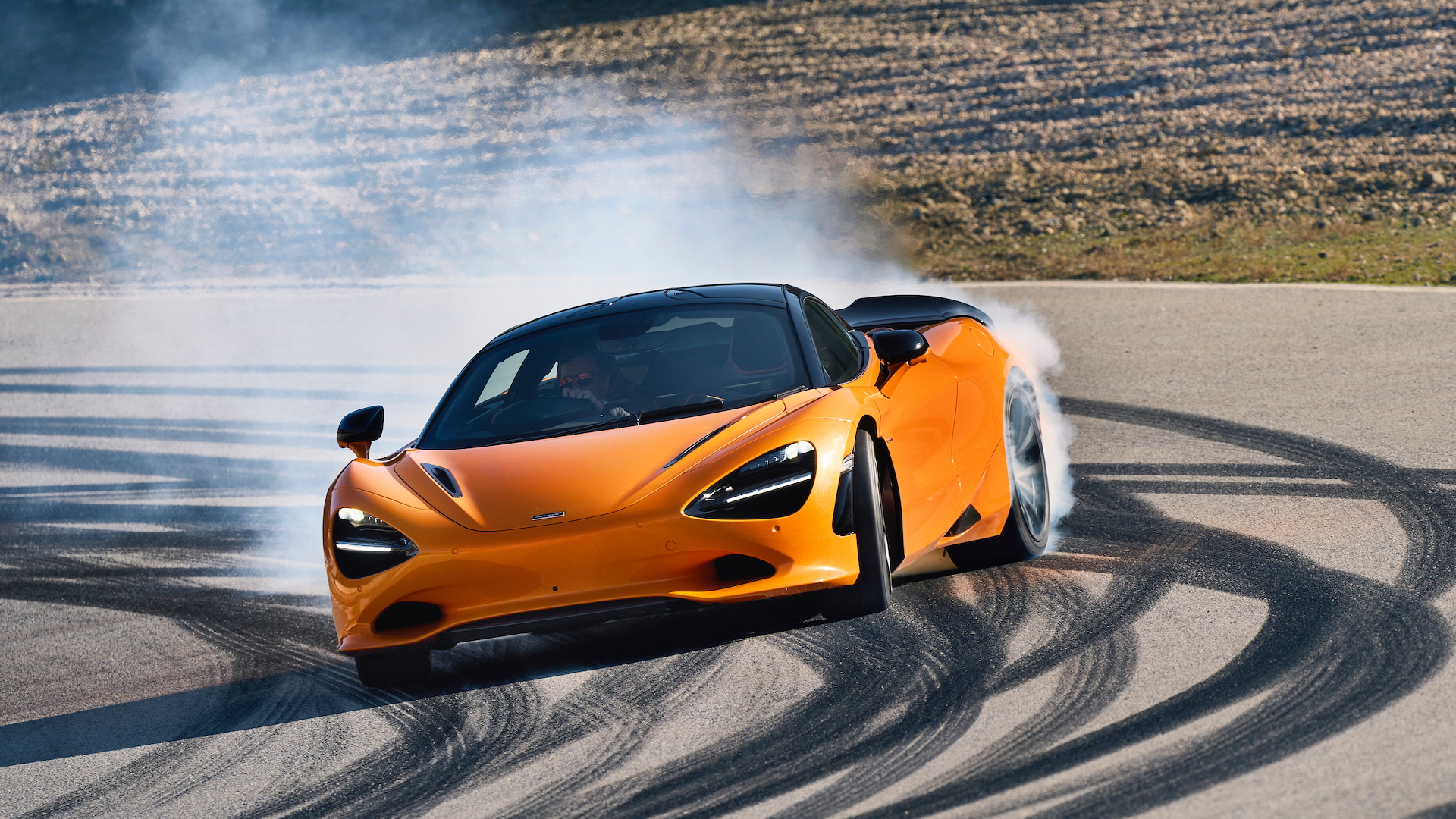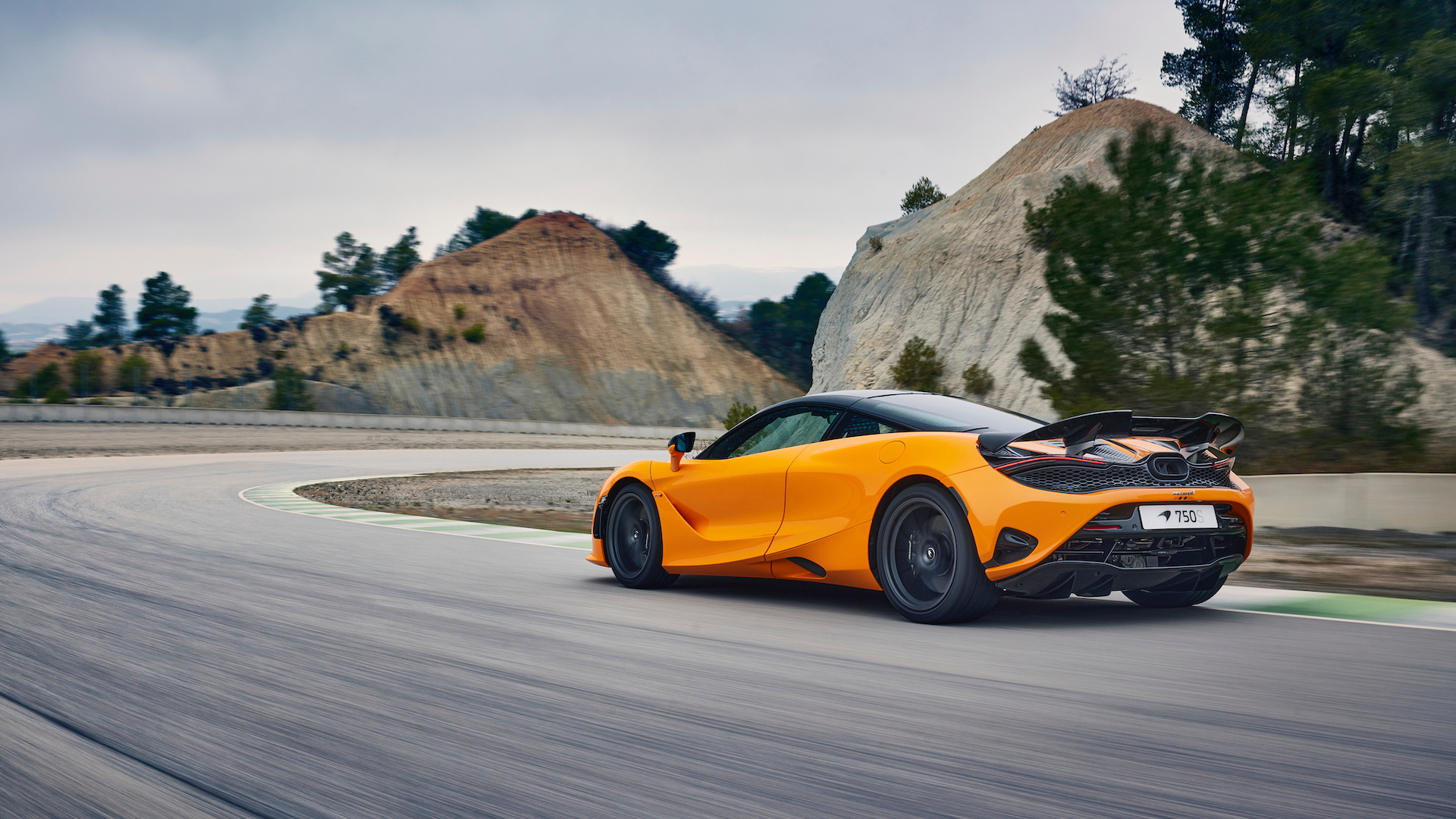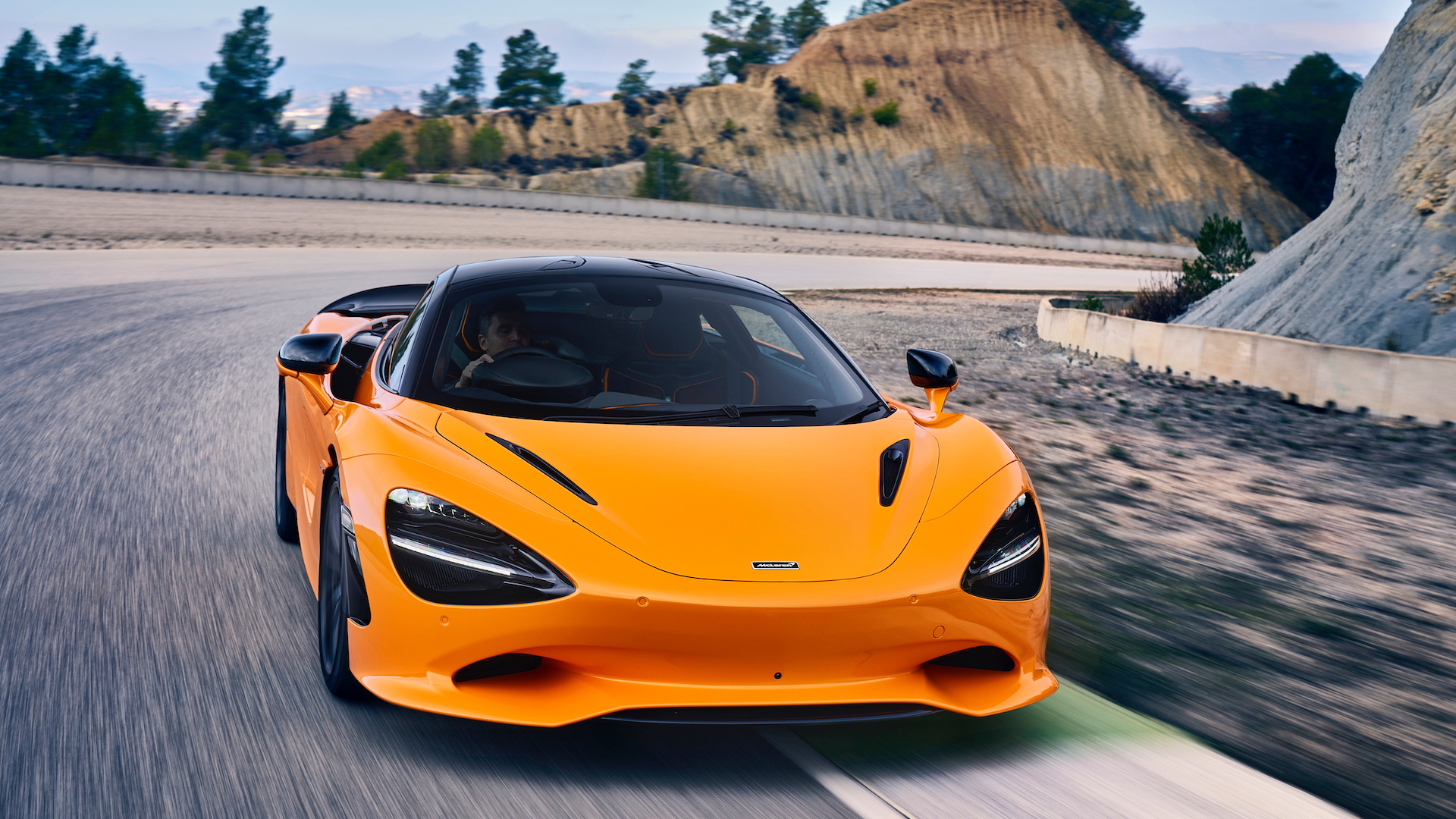McLaren is updating its supercar lineup. It started with the "entry-level" Artura, and now it extends to its top series production model, which gets the name 750S.
The 2024 McLaren 750S replaces the 720S, the supercar maker announced on Wednesday, providing information on both the coupe and Spider body styles. The 750S will not be an entirely new car. Instead it will use 30% new or revised parts and deliver improvements in power, engagement, and technology, according to McLaren.
Located behind the driver in this mid-engine supercar will be an updated version of the M840T 4.0-liter turbo V-8 that increases output to 740 hp and 590 lb-ft of torque, up from 710 hp and 568 lb-ft. The improvements come by way of more boost, twin fuel pumps, lighter pistons, and a new engine management system. A new center-exit exhaust is 4.9 pounds lighter than the outgoing version, and new engine mounts are tuned to enhance engagement during startup and performance driving and improve comfort when cruising.
McLaren says the 750S will accelerate from 0-60 mph in 2.7 seconds, 0-124 mph in 7.2 seconds (7.3 seconds for the Spider), 0-186 mph in 19.8 seconds (20.4 seconds for the Spider), and cover the quarter-mile in 10.1 seconds (10.3 seconds for the Spider). Both body styles will also top out at 206 mph.
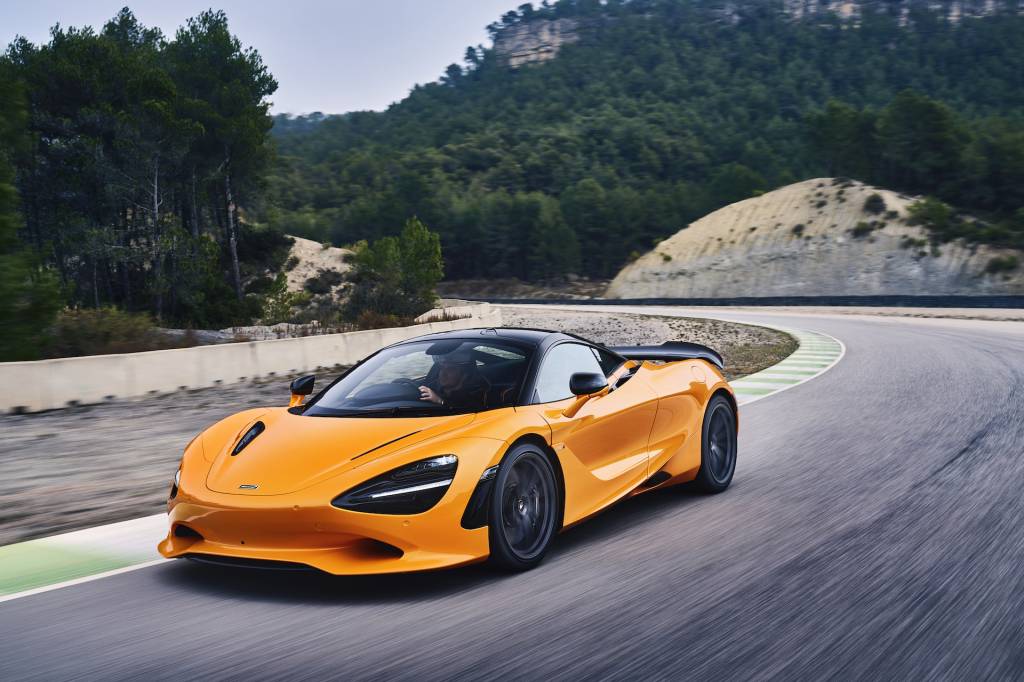
2024 McLaren 750S
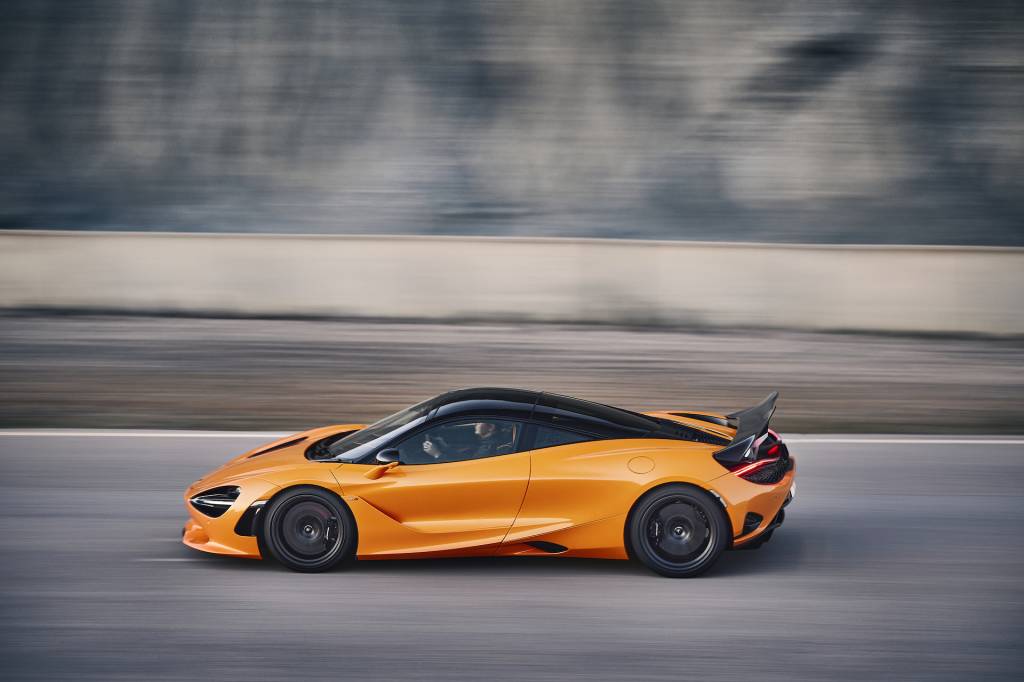
2024 McLaren 750S
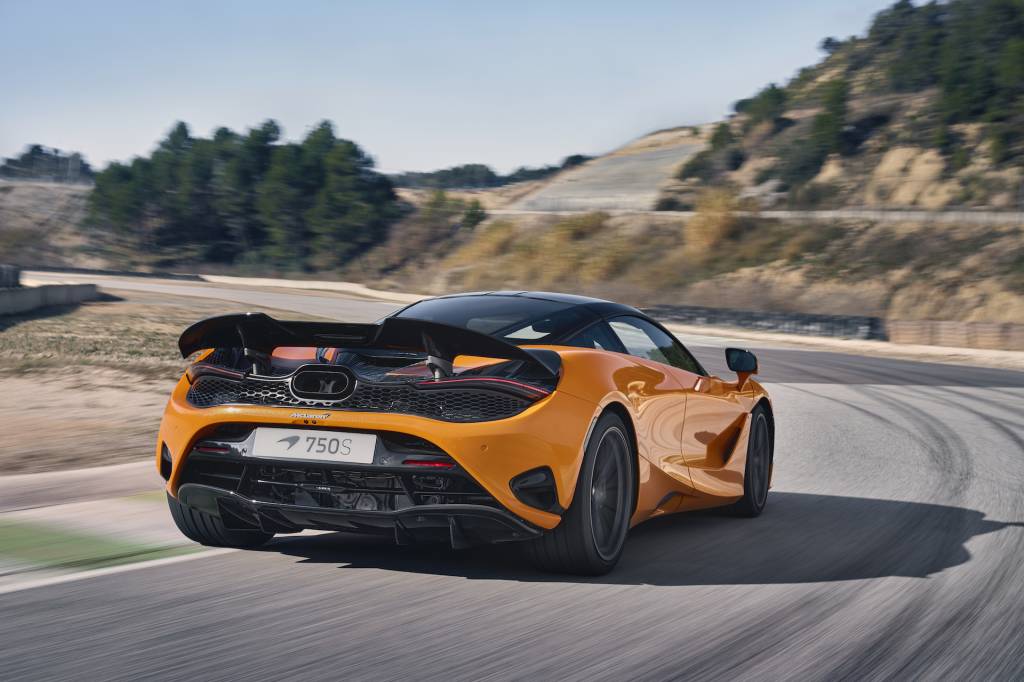
2024 McLaren 750S
A 7-speed dual-clutch transmission with shorter gear ratios, quicker shifts, and rev limit downshifts helps make the car faster, as does a 15% shorter final drive ratio. Another reason is lighter weight. McLaren says it cut about 66 pounds out of the car versus the 720S and it weighs in with a curb weight of 3,062 pounds for the coupe and 3,170 pounds for the Spider. That makes it the brand's lightest series production car (McLaren also offers more performance-focused models that could weigh less).
The 750S uses the brand's carbon-fiber tub as the basic structure. It's called Monocage II for the coupe and Monocage II-S for the Spider, and there is no difference in structural rigidity between the cars. The Spider has a power hard top that takes 11 seconds to go up or down and can be controlled at speeds up to 31 mph.
The McLaren Proactive Chassis Control linked-hydraulic suspension returns, this time in its third generation. The handling balance is slightly adjusted with front springs that are 3% softer and rear springs that are 4% stiffer, which should help the rear end feel more lively. New twin-valve dampers are also 4.4 pounds lighter. The car gets a 0.2-inch wider front track, and rides on Pirelli Corsa P Zero or optional P Zero Trofeo R tires. McLaren says the wheels are the lightest yet on a series production car from the brand, and they save 30.4 pounds. The hydraulic-assist power steering has a quicker ratio and a new power steering pump. The brake tuning is also revised for better performance and feel with a new brake booster and vacuum pump. Buyers will be able to opt for a track brake upgrade with carbon-ceramic brakes from the Senna hypercar.
An updated nose lift system takes four seconds instead of 10 seconds to lift the front end for curbs and steep driveways.
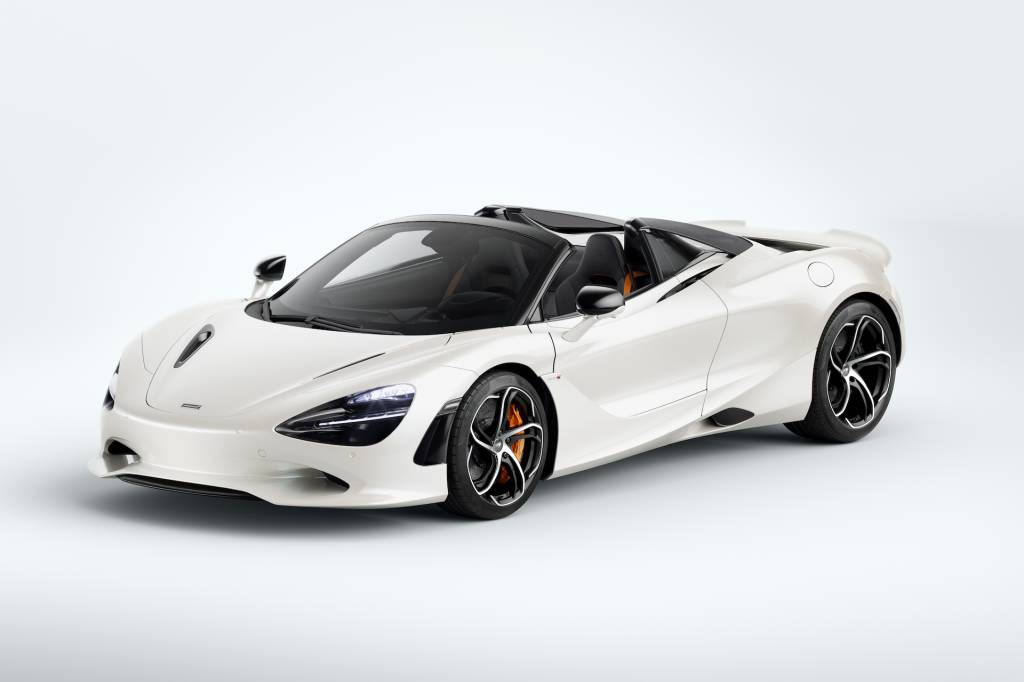
2024 McLaren 750S

2024 McLaren 750S
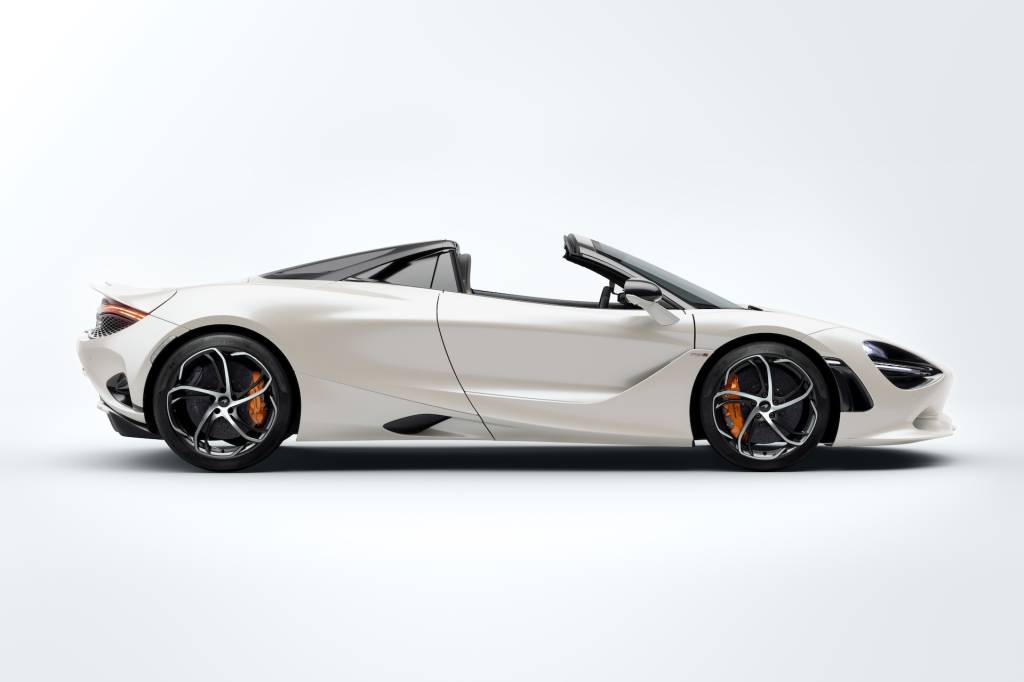
2024 McLaren 750S
A new McLaren Control Launcher setting acts like an Individual drive mode in other cars and lets drivers pick their preferred settings for the aerodynamics, handling, and powertrain at the press of a button. McLaren says it also aimed for more adjustability in the throttle, brakes, and steering, and notes that the suspension changes were made to retain the 720S's comfort while increasing performance.
The new design is an update on the look of the 720S. It gives the car more downforce, but McLaren says that wasn't the point. Instead, the company says it aimed to improve the car's balance with its aero changes. A new front bumper extends the front splitter, wider rear wheel arch vents increase downforce, and new lower air intakes in the sides enhance cooling. The carbon-fiber rear wing is 2.4 inches longer, which gives it 20% more surface area to better act as an airbrake or an F1-style drag reduction system. The car also gets narrower intakes that enclose the headlights.
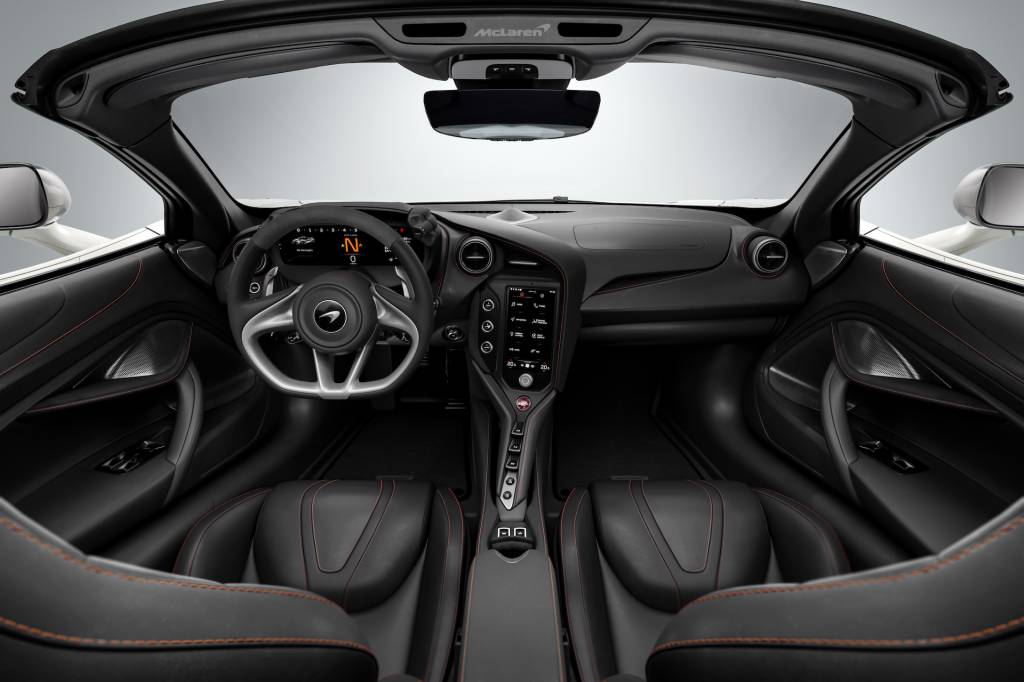
2024 McLaren 750S

2024 McLaren 750S
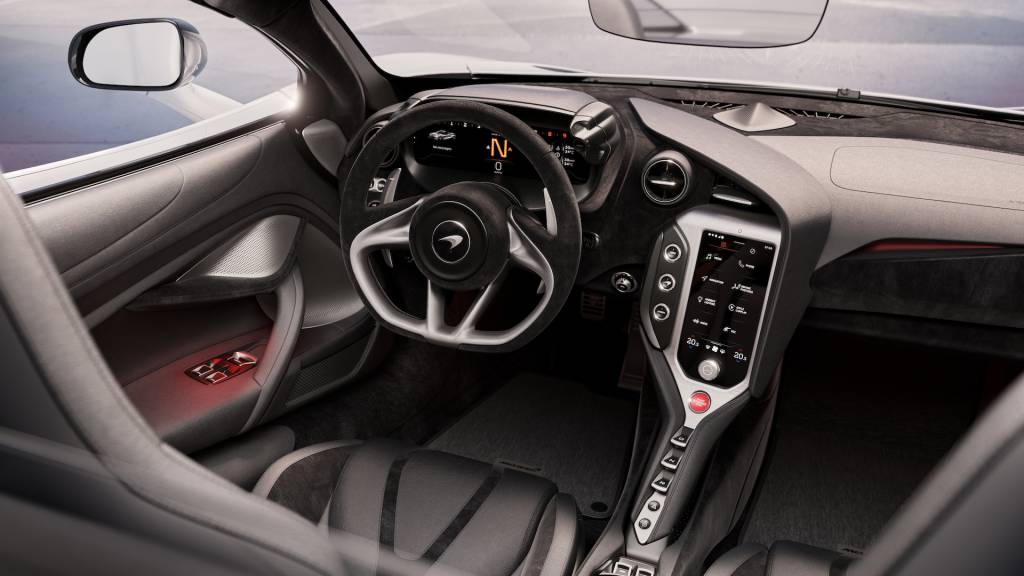
2024 McLaren 750S
The headlight surrounds will be offered in body color or carbon fiber, and the front and rear bumper vents will also be offered in carbon fiber. The Spider will be offered with an electrochromatic glass roof that can dim or brighten to let in light even with the top up.
Inside, the 750S has a revised driver interface that moves the powertrain and handling mode adjustments from the center console to the binnacle like in the Artura. It gets upgraded infotainment with an 8.0-inch touchscreen that now has Apple CarPlay, plus ambient lighting. Nappa leather and Alcantara upholstery options will be offered, and carbon-fiber seats that save 38.6 pounds will come standard. Even lighter carbon-fiber seats will be available, as will a Bowers & Wilkins audio system. Coupe buyers will have the option of a glass panel in the rear package shelf that shows the top of the powertrain in the cabin.
The 750S goes on sale later this year with a starting price of $331,740 (including a $5,500 delivery fee and a $2,240 Americas Accessories Pack) for the coupe and $352,740 for the Spider. Interested buyers can reserve their cars now at McLaren dealers.

